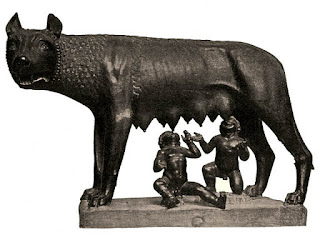Pre-stomach flu post:
Foxes, sly and crafty, are notoriously difficult to catch. The Narragansett Indians, however, knew about mysterious black foxes that were impossible to catch or kill.
In 1643 Roger Williams, the founder of Rhode Island, wrote:
"The Indians say they have black foxes, which they have often seene, but never could take any of them. They say they are Manittooes, that is Gods, Spirits, or Divine powers, as they say of everything which they cannot comprehend."
As the years passed, the black fox took on more sinister connotations among the British settlers, and a particularly nasty black fox was said to haunt the Salmon River in Connecticut. Poet John Brainard made this legend into a verse that was well-known in its day. Later, John Greenleaf Whitter, a poet from from Haverhill, Massachusetts, expanded the legend in his own poem in 1831, incorporating elements of the Wild Hunt myth and Algonquin shamanism.
According to Whittier,
"They said it was a Fox accurst
By Hobomocko's* will
That it was once a mighty chief
Whom battle might not kill
But who, for some unspoken crime
Was doomed to wander still."
*Hobomocko is one name for the Algonquin god associated with death, night, water and shamanism.
One winter, the black fox appears near a New England town, and two cocky young Yankee hunters chase after it with rifles, vowing that they will kill it. The local Indians disagree.
"They told us that our huntersHmmm. Obviously, these hunters had never seen a horor movie or read a horror story. When the old guy at the gas station tells you to avoid Camp Crystal Lake, avoid it! When the local Indians tell you something's cursed, it really is!
Would never more return
That they would hunt for evermore
Through tangled swamp and fern
And that their last and dismal fate
No mortal ear might learn."
In the spring, the hunters' corpses are discovered deep in the forest. Nothing ever grows on that spot again, and animals and birds avoid it.
"For people say that every yearIt's a nice little story, and it's interesting to see how over two hundred years the black fox changed from something spiritual to something spooky.
When winter snows are spread
All over the face of the frozen earth
And the forest leaves are shed
The Spectre-Fox comes forth and howls
Above the hunters' bed."




